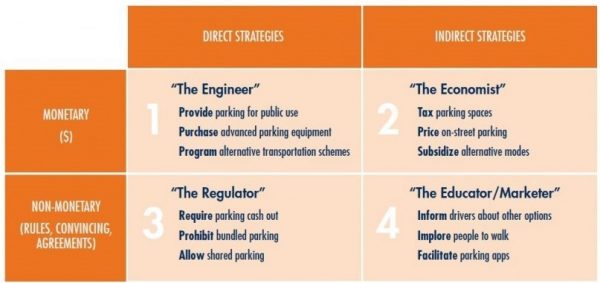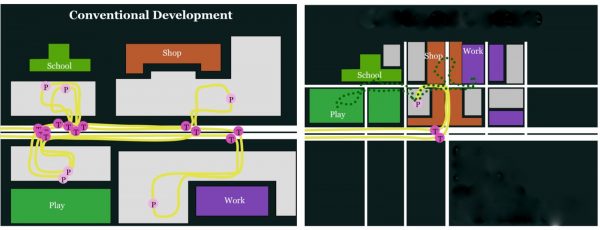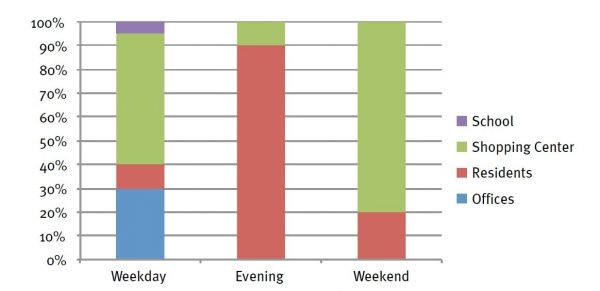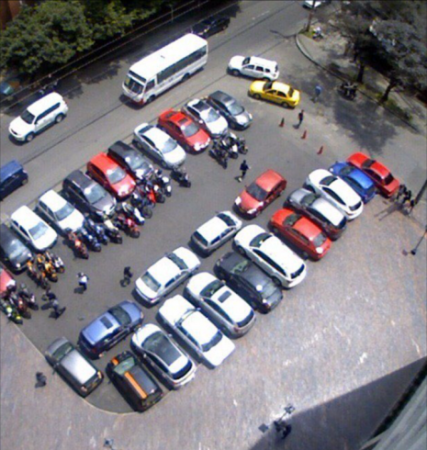
Cities around the world are reducing their parking supply. San Francisco and Philadelphia in the United States noted an oversupply of parking spaces after conducting parking censuses. In 2010, the San Francisco census pointed out that more than 50% of the 441,541 spaces available in the city were free and on-street. Knowing that, allowed the city to repurpose parking spaces into bike lanes and parklets. At the same time, parking requirements for new developments were re-evaluated considering the parking inventory available in the area with new parking spaces only allowed in areas with parking shortage.
Philadelphia has been conducting an inventory of parking every five years since 1990. Between 2010 and 2015, the city reduced 3,000 parking spaces in the central area (7% of the total spots available). Most of these were at grade parking lots that gave place to new developments. In the same period, authorities verified that parking occupancy rates went down and the economic activity went up. The reason being that Philadelphia is a transit rich and walkable city with a high residential downtown population which reduces the overall car dependency.
Plaza 80, Bogota (Colombia) – Repurpose of an at grade car park:
These examples show that it is time to rethink the way cities plan their parking supply and the reliance on minimum requirements considering that we don’t always need to provide the same levels of parking in new commercial and residential developments. Instead, we need to use in a different way the ones that already exist.
Parking management strategies need to be implemented to achieve efficient use of parking inventory. Since, parking involves different stakeholders, such as city planning and transit authorities, property owners and parking operators, therefore, strategies must involve all the stakeholders and consider their viewpoints. The ultimate goal is to understand the community needs and shift the thinking of parking spaces as objects to service, where the quality and usefulness of a parking space is measured by how efficiently it serves the area. In this case, a parking spot that is used by different people and is rarely empty is fulfilling its purpose.
There are numerous strategies that can be used in parking; they can have a technology, pricing, marketing or regulatory approach. The figure below shows how different backgrounds can influence the type of solution suggested by strategists.

All these different possibilities illustrate the complexity of defining parking strategies. Therefore, it is necessary to coordinate those perspectives into a plan to achieve successful solutions according to the specific needs of each area.
In the context of parking management and efficient use of parking supply, an interesting approach can be considered by parking managers, the park-once-and-walk district. This concept proposes that each area should have its “parking pool” supply as an alternative to each development having its own on-site private parking. Park-once-and-walk districts suggest using the current parking stock, discouraging the development of new ones.
In this case, it is necessary to encourage private garages in commercial or mixexd-use developments to be open to public use creating a pool of parking available within a specific area. This scenario would also eliminate the need of building stand-alone public parking at the same time eliminating minimum parking requirements. The benefits of the idea are maximised if planners are also incorporating walkable areas since people will have to park and walk towards their final destination.
Parking-Once-and-Walk Districts Can Reduce Traffic
Instead of driving around searching for an available on-street parking space or parking in the private on-site garage at each new destination, drivers would park in the available parking pool and walk to their various destinations. The figure below illustrates that park-once-and-walk districts could reduce the parking spaces needed, the land area used, trips on the arterial roads, turning movement in arterial roads and vehicle miles travelled.

(Barter, 2016).
In addition, mixed-use neighbourhoods have different users with diverse parking needs that are usually complementary. For instance, residents most probably will use the parking spaces in the evenings leaving their spots empty while working during the day. Office workers have the opposite behaviour and these two groups could use the same spots. The graph below demonstrates how 100 parking spaces in a mixed-use area can be distributed between different users according to their needs at different times of the day.

Reducing or Eliminating Minimum Parking Requirements
As the San Francisco example demonstrates, it is easier to reduce or eliminate minimum parking requirements when there is reliable information about parking availability. The same logic applies to park-once-and-walk districts, if people see that there will not be lack of parking spaces in the area. Where it will be more acceptable to have less parking being developed. A strong community consultation campaign will assist in changing.
The Mindset about On-Site Private Parking
Currently, people expect to find parking at their final destination. The ultimate convenience of door-to-door journeys is most likely to be replaced as it becomes more usual to park near the destination but not necessarily in an on-site car park. Therefore, the implementation of park-once-and-walk districts can reduce the fear of parking shortage as although there will be buildings with no parking, there will be a parking pool to address the needs of that area.
As discussed, minimum requirements generate a parking oversupply in many cities and town centres. As a consequence, many car parks are underused. However, in car-dependent areas, it is difficult to eliminate existing private car parks since people are still attached to the idea of finding on-site private parking. Therefore, it takes time for demand and supply to be balanced in this scenario. The park-once-and-walk proposition facilitates to consider repurposing unwanted car spaces.
Market Regulation of Demand and Supply
It is also necessary to mention that public car parks are more likely to be managed and priced in comparison to private parking. Private garages often privilege employees and visitors and don’t allow casual parking. Managed parking normally doesn’t exclude different user groups and use pricing strategies to control demand. Thus, it is more likely that employees, used to having free parking, would be discouraged to drive to work in a park-once-and-walk district, reducing even further the area’s parking need and traffic congestion.
Therefore, managed parking responds to the market more efficiently and tends to be less underused than free parking. Since it is competitively priced, it generates more value for the owners and for the community than free parking.
Parking is a complex subject that cannot be analysed without considering related areas such as transport, traffic and planning policies. It is always necessary to evaluate the full context before proposing changes in the parking landscape. The park-once-and-walk district must be seen as one aspect of a plan towards more walkable, pedestrian-friendly and transit-rich city.
Related Article
Are there enough parking spaces in Australian CBDs?
References
Barter, P. 2016, Walkable Parking: Why Most Parking Should Be Public, Reinventing Parking.
Berg, N. 2016, Lots to lose: how cities around the world are eliminating car parks, The Guardian.
Willson, R. 2016, Parking Management for Smart Growth, Access.


